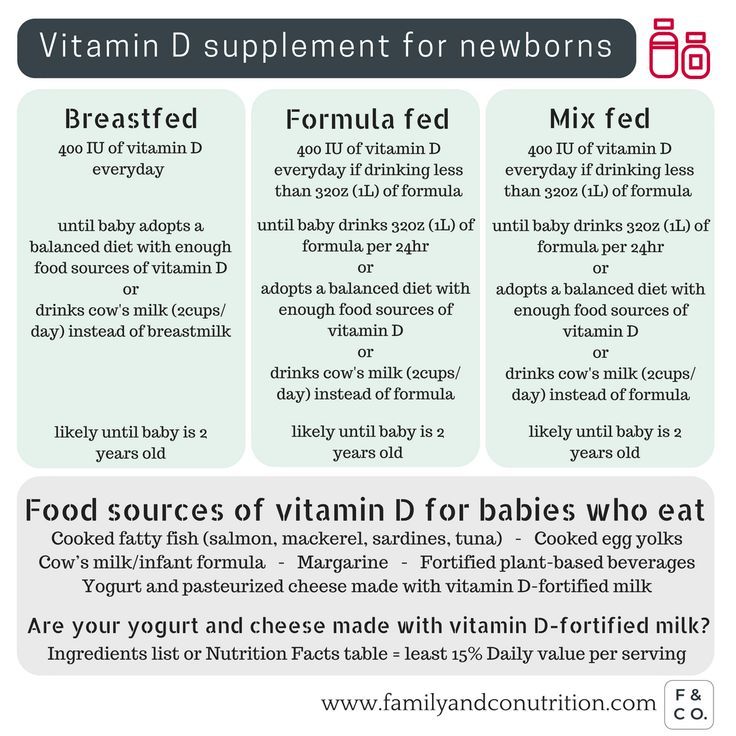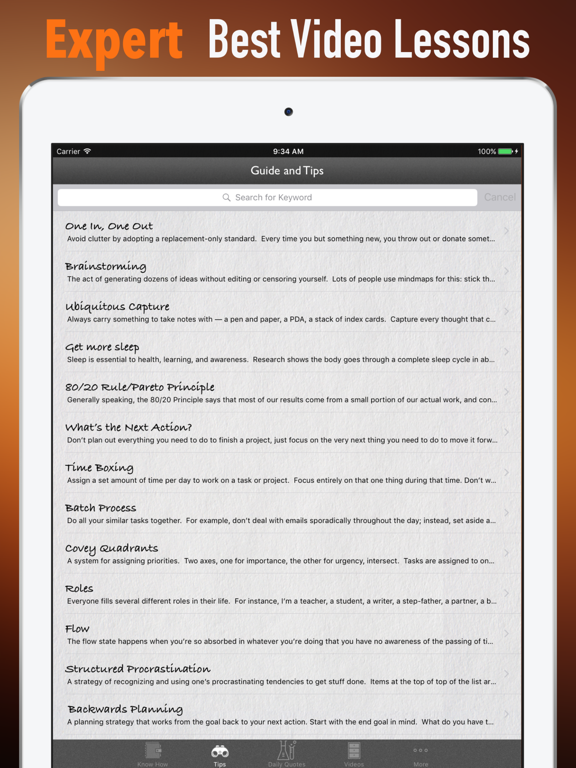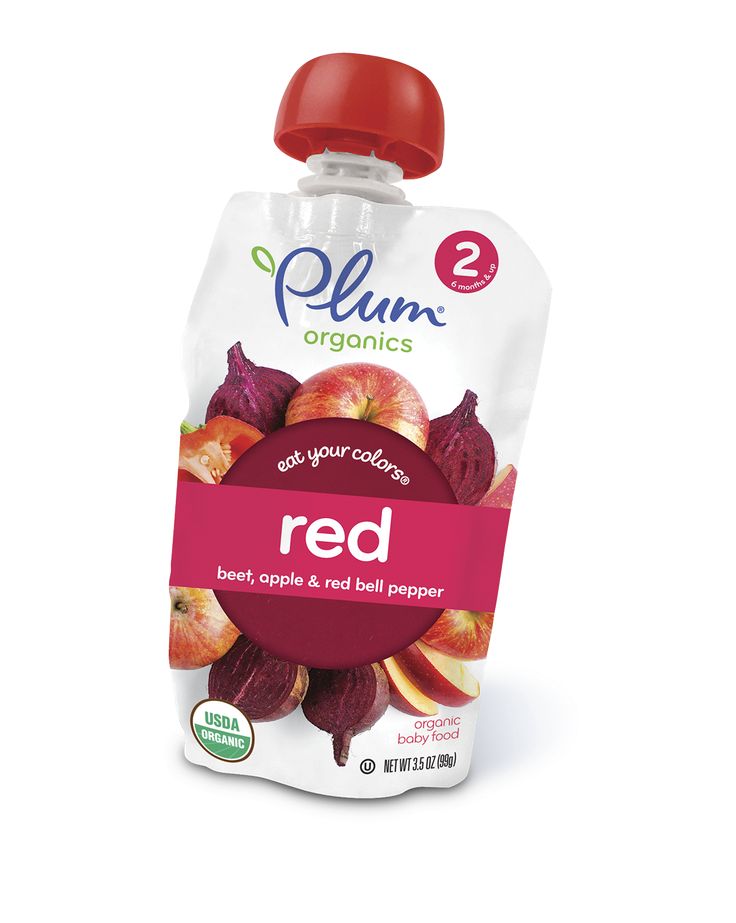Why does my baby gulps when feeding
How to Have a Calm-Gulp Free Feeding
Free Shipping on Orders $60+ (US Only)
Learn More
Start typing and hit Enter
Shopping Cart
Register
Back to login
How to Have a Calm-Gulp Free Feeding
By :Amy Peterson 13 May 2019
Babies feed many times each day. As moms, we want this to be a happy experience for our babies. Helping your baby have a gulp-free feeding is one way to make the feeding calm. Sometimes a mom may hear her baby gulp during a feeding, but sometimes gulping can be more subtle and quiet.
If your baby is struggling with gulping during bottle-feeding, you will be able to see it in your baby’s feeding behaviors even if you can’t hear it. A baby’s face will look worried with a furrowed brow when she feels overwhelmed. You might even notice your baby’s arms move up to block the bottle, or hos hands shift from a closed position to fingers that are spread apart. These are signs that the feeding doesn’t feel right for your baby. If your baby is struggling with some gulping during a feeding, here are some tips that may help.
LOOK AT YOUR BABY’S LIPS
Your baby’s lips need to form a complete seal on the nipple. If there are gaps between your baby’s lips and the nipple, chances are your baby is swallowing extra air which can sound like gulping. Using a nipple that gradually widens at the base and has a place for your baby’s lips to rest is helpful for many babies. You may need to try more than one nipple to see which works best for your baby.
CHECK THE BOTTLE FLOW
Most babies start with a slow flow nipple. Keep in mind that brands flow differently from one another, so a slow nipple from one brand might flow faster than a slow nipple from a different brand. Use a nipple, such as the Evenflo Feeding Balance + Nipple, that allows your baby to swallow after every one or two sucks without gulping.
FEED IN A SEMI-UPRIGHT POSITION
Bottle-feeding your baby a slightly upright position allows the milk to collect in the mouth, rather than the at the throat, so your baby can have a controlled swallow. For example, think of drinking from a cup while sitting up versus lying down. When lying down, gravity causes the milk to rush to the back of the throat which can result in gulping. A more upright position can prevent the need to gulp.
For example, think of drinking from a cup while sitting up versus lying down. When lying down, gravity causes the milk to rush to the back of the throat which can result in gulping. A more upright position can prevent the need to gulp.
ALLOW YOUR BABY TO REST BRIEFLY DURING A FEEDING
When a baby breastfeeds, milk stops flowing periodically between letdowns. This is nature’s way of allowing the baby a brief rest to catch his/her breath. Many babies will stop sucking and rest during bottle-feeding on their own. But if your baby tends to continuously swallow which can lead to gulping, help you baby rest by leaving the nipple in the mouth and tipping it down slightly so the milk doesn’t reach the nipple tip. When your baby starts sucking again, let the milk flow again.
Previous Post
Next Post
Why does my baby make gulping sounds when bottle feeding?
Your baby might make gulping sounds when you are feeding her. And you might be wondering why she does that and if you should try to do something about it.
In our opinion, your baby is making gulping sounds when bottle feeding because the milk is coming too fast and she can’t swallow it fast enough. There can be several reasons for this but mainly it’s because the milk flows too fast.
Table of Contents
- 1 How will you know that your baby is gulping?
- 2 What can you do to have a gulp-free feed?
- 2.1 Use a slow flow bottle teat
- 2.2 Make sure the nipple engages your baby’s whole mouth
- 2.3 Try feeding in an upright position
- 2.4 Hold the bottle right
- 2.5 Don’t let your baby drink without interruption
- 3 Does your baby make a clicking noise while feeding?
- 4 What is that smacking sound that my baby makes while feeding?
- 4.1 What is a lip tie?
- 4.2 Lip tie symptoms
- 4.3 What can you do?
- 5 My baby makes gulping sounds when not feeding
- 5.1 How can you help your baby?
- 6 My baby is swallowing air while bottle-feeding
- 6.
 1 What can you do?
1 What can you do?
- 6.
- 7 My baby is dribbling milk while feeding
- 7.1 What can you do?
- 8 The baby is choking while bottle-feeding
- 9 Baby is not swallowing milk from the bottle
- 9.1 What can you do?
- 10 Baby drinks bottle too fast?
- 10.1 How to slow my baby down when bottle feeding?
- 11 Why does baby make swallowing sounds when not eating?
- 12 What kind of bottle and Nipples are good for your baby?
- 13 Conclusion
- 14 READ NEXT
- 14.0.1 How to wash baby hair without getting water in the eyes
- 14.0.2 Top 7 Best Baby Hair Oils for Babies |2022
- 14.0.3 Coconut Oil for Babies Hair – An Essential Guide
- 14.0.4 9 Best Curly Hair Products for Babies in 2022
- 14.0.5 Can a Baby’s Hair Change from Straight to Curly?
- 14.0.6 9 Proven Signs Your Baby Will Have Beautiful Curly Hair That You Love
How will you know that your baby is gulping?
Sometimes you can hear your baby gulping down the milk nice and clear, other times it might happen silently.
You will know that your baby is gulping because she will look uncomfortable. She might pull her face and not look peaceful while drinking. Or she might try to swat the bottle away. Another sure sign that she is not enjoying the feeding is when she spreads her fingers apart.
Hey! By the way… any links on this page that lead to products on Amazon are affiliate links and I earn a commission if you make a purchase.
Thanks in advance – I really appreciate it!
What can you do to have a gulp-free feed?
Use a slow flow bottle teat
Buy a Slow Flow nipple to feed your baby. These teats allow the milk to flow slower, which makes it easier for your baby to swallow the right volume of milk. Different brands have different slow flow teats. You will have to try a few out before you find one that works for your baby.
You might want to try the Evenflo Feeding Balance wide neck nipples, designed to provide a gulp-free flow rate.
CLICK ON IMAGE FOR DETAILS
Make sure the nipple engages your baby’s whole mouth
Your baby’s lips need to completely cover the teat. There should be no gap between your baby’s lips and the teat. When there are gaps, your baby will swallow air and will most probably start drinking with gulping sounds.
There should be no gap between your baby’s lips and the teat. When there are gaps, your baby will swallow air and will most probably start drinking with gulping sounds.
The bottle nipple should widen where it touches your baby’s lips. Try different bottle nipples to see what works for your baby.
Don’t have time to read the whole post right now?
No worries. Let me send you a copy so you can read it when it is convenient for you. Just me know where to send it ( takes 5 seconds ).
Try feeding in an upright position
This is one of the best breastfeeding positions.
Think about yourself drinking. If you sit upright it’s easy to drink and swallow; if you lie down and drink, the liquid flows too fast for you to swallow.
The same principle applies when feeding your baby.
Try to hold her in a semi-upright position so the milk flows slower and she can drink more comfortably.
READ ALSO : Learn why baby chokes – Why does my baby choke while bottle feeding – 7 reasons
Hold the bottle right
Don’t hold the bottle at a sharp upside-down angle.
Tilt the bottle only enough so the teat is filled with milk.
This trick will help that the milk doesn’t flow too fast and overwhelm your baby.
Don’t let your baby drink without interruption
Let your baby catch her breath for a few seconds while she is feeding.
Again, think of yourself when you drink something – you also take a short breath between swallows, don’t you?
To let your baby rest a while, tilt the bottle so the milk doesn’t flow into her mouth. Let her catch her breath, and continue feeding.
Does your baby make a clicking noise while feeding?
Image by Dirk (Beeki®) Schumacher from Pixabay
If your baby makes a clicking sound while feeding it’s a sure sign that she’s not latching onto the bottle nipple properly.
Latching onto a nipple, whether a bottle nipple or a breast nipple, is not as straightforward as you might think.
For many babies, it’s difficult to latch onto a nipple. There are various reasons for this. For instance, the baby may be premature with a very small mouth.
For instance, the baby may be premature with a very small mouth.
Your baby must properly latch onto a bottle nipple to get enough milk and thrive. Watch your baby’s mouth and sucking action. If she doesn’t latch onto the teat properly, try another one.
Apart from the clicking sound you hear, your baby will not feed peacefully and might even refuse feeds if she can’t latch properly.
What is that smacking sound that my baby makes while feeding?
That loud smacking noise your baby makes while feeding could be the result of a poor latch-on.
This may be due to a condition called lip tie.
Lip tie makes it very difficult for a baby to latch on and stay latched on.
What is a lip tie?
The piece of flesh behind your upper lip in your mouth is called the frenulum. You can feel it with your tongue. When that piece of flesh is stiff or too thick, it causes lip tie. Lip tie may make it difficult for the baby to move her upper lip, so she can’t control it.
Lip tie isn’t necessarily a big problem, as long as the baby keeps gaining weight.
Lip tie symptoms
You can suspect that your baby suffers from lip tie if your baby
- struggles to latch on to the nipple
- has difficulty breathing during feeding
- makes a clicking sound while nursing
- becomes very tired during feeding
- keeps falling asleep during nursing
- doesn’t gain weight or gains weight slowly
What can you do?
There is a surgical procedure called lip tie revision that can be performed by a pediatrician, but experts advise that parents first consult a pediatrician or a lactation consultant to discuss the issue. The surgery often doesn’t improve the condition.
A lactation consultant can show you how to feed your baby effectively.
Babies with lip tie feed easier from a bottle than the breast.
My baby makes gulping sounds when not feeding
If your baby makes gulping sounds when he’s not feeding it might be caused by acid reflux.
Acid reflux happens when food and acid in your baby’s stomach doesn’t remaiin in the stomach, but come back up into the esophagus.
This is known as Gastroesophageal Reflux disease ( GERD).
How long does expressed breast milk...
Please enable JavaScript
How long does expressed breast milk keep?
The esophagus is the tube that takes food from the mouth to the stomach.
At the lower end of the esophagus is a muscle that tightens to keep food in the stomach. If this muscle doesn’t work properly, the food can come back up in the esophagus and cause your baby great discomfort.
How can you help your baby?
Be careful to put your baby in a position that keeps her body upright and straight. Placing your baby in an upright position will help the food to stay in the stomach.
A slouched position will create pressure on the stomach and the food might be forced back up the esophagus.
If you have to put your baby down after a feed, you can use rolled blankets or towels to keep her body in an upright position.
If you notice symptoms of discomfort during feeding, keep your baby upright and straight after eating. Don’t lie him down straight after feeding.
My baby is swallowing air while bottle-feeding
Many babies swallow air when they are feeding. This happens if
- the baby drinks too fast
- the baby’s mouth doesn’t cover the teat completely
- the baby is lying down while feeding
- the teat holes are too big so the milk flows too fast
- the baby cries intensely for an extended time
When you buy teats for your baby bottles, check that the holes are of such a size that they let one drop of milk drip per second.
Swallowing air can cause painful gas discomfort, but it’s something that can’t be completely avoided.
What can you do?
Burp your baby regularly.
You should burp your baby during and after feeding. Don’t let your baby lie down flat during a feed. Hold her in a seated position while you support her head with your hand. Most parents find it effective to burp their baby over their shoulder. Rub your baby’s back and hold her upright to help her burp.
Most parents find it effective to burp their baby over their shoulder. Rub your baby’s back and hold her upright to help her burp.
Do this a few times during a feed and also spend time burping your baby after each feed.
While feeding, tip the bottle so the milk completely fills the bottle nipple. Your baby’s mouth should completely cover the nipple.
Choose a bottle nipple that is soft and fills your baby’s mouth. Be sure to check that the milk doesn’t flow too fast.
You can check the nipples shown below
CLICK ON IMAGE FOR DETAILS
Be aware of how long your baby takes to feed. If she gulps down her bottle in 5 minutes, she’s drinking too fast and will swallow a lot of air. A typical feed should take about 20 minutes.
My baby is dribbling milk while feeding
It’s easy to see why babies may dribble milk while feeding. When you hold a bottle upside down to feed a baby, the milk flows out due to gravity, even when the baby stops sucking. This means the milk keeps coming even when the baby doesn’t want any more or is tired of sucking.
This means the milk keeps coming even when the baby doesn’t want any more or is tired of sucking.
When this happens, the baby can become stressed. You will notice the stress when your baby
- tries to push the bottle away
- turns her head away from the bottle
- gulps or coughs
- splay her fingers
- has milk running down her mouth
What can you do?
Hold your baby in an upright position and the bottle at a slight angle to control the flow of milk. Make sure the nipple is filled with milk.
When you start a feed, don’t force the nipple into his mouth. First, touch the teat to her mouth to let him get ready for the bottle.
Also, check that your baby’s lips completely cover the teat so there’s no room for air to get into her mouth.
Take note of how often your baby swallows. She should swallow once every two or three times she sucks. When you notice she stops sucking to swallow, tip the teat upwards so the milk stops flowing. This action will stop milk from dribbling from her mouth.
This action will stop milk from dribbling from her mouth.
Dysphagia could also be a reason for the baby dribbling while bottle feeding.
Common dysphagia is a medical term for a swallowing disorder.
The baby is choking while bottle-feeding
Nathan Dumlao via Unsplash.com
One of the most common causes of babies choking on their milk while bottle feeding is prop feeding or bottle propping.
This happens when the baby is not held by an adult while feeding. The baby is put down and her bottle is propped up against a pillow or rolled-up blanket or towel to keep it upright.
This is very dangerous and can cause the baby to choke. Think about it, due to gravity, the milk just keeps on coming regardless of whether your baby is ready to swallow it or not. There is no one to notice that the baby’s mouth is getting too full and the milk is running from her mouth.
The thing is, a baby choking doesn’t always make a sound, so you won’t necessarily realize that your baby is busy choking.
If you leave your baby alone with a propped-up bottle, you are putting him at great risk.
Baby is not swallowing milk from the bottle
When your baby won’t take a bottle, it may be that you introduced your baby to the bottle too late.
Most babies who don’t take to the bottle easily are used to the breast and find it difficult to adjust to feeding with a bottle.
This is called Paced bottle feeding.
When they are born, babies have an automatic sucking reflex, but two or three months into their lives they have developed a sucking action that is adjusted to getting milk from the breast and mother’s nipple.
It may be difficult for a baby to adjust from the breast to the bottle as the milk flow from a bottle is different and so is the nipple. The texture, shape, and feeling of the nipples differ considerably.
All these factors may account for your baby’s refusal to drink milk from a bottle.
What can you do?
If you want your baby to feed from a bottle you mustn’t breastfeed too long. But you also don’t want your baby to miss out on the benefits of breastmilk. So your baby should breastfeed for at least the first four weeks before you introduce the bottle.
But you also don’t want your baby to miss out on the benefits of breastmilk. So your baby should breastfeed for at least the first four weeks before you introduce the bottle.
Most babies will adjust to the bottle at around four weeks.
You can begin the process by initially switching back and forth between breastfeeding and the bottle. This way your baby will gradually get used to the bottle.
Another trick you can try is to offer the bottle immediately when your baby has woken up after a nap. When the baby has just woken up she is not distracted and will focus on feeding.
Also, don’t let your baby get too hungry. If she is too hungry, she will already be upset and not in the mood to try something unfamiliar.
Baby drinks bottle too fast?
Your baby might also be drinking too quickly because he wants more than what he needs.
It could be that he isn’t taking enough time between each sip. He’ll need to learn this skill as well.
How to slow my baby down when bottle feeding?
You can help teach your baby to slow down by holding the bottle still until he finishes sipping before offering another.
He’ll soon figure out that if he takes longer to finish off the first bit then he gets more to eat.
Why does baby make swallowing sounds when not eating?
If your baby is making swallowing sounds when not eating or when sleeping then your baby has silent acid reflux symptoms.
She swallows the food back down after it comes up into her throat. With this condition the stomach acid can damage the lining of the esophagus.
What kind of bottle and Nipples are good for your baby?Choosing the right bottle and nipple for your baby can be daunting given the many options available. Ask for recommendations from friends , go through product reviews, and do proper research but be prepared for trial and error, as that is the best way to find out
You can find the right bottle-nipple combination by learning about your little one’s preferences. Some babies are not too choosy and can make do with any bottle and nipple while some prefer a particular nipple shape or bottle brand.
✅ Here are some top selling bottles and nipples which are popular with young mothers.
Since you have no control over your baby’s likes, just accept it calmly , and be ready to try out different options before you arrive at a proper selection. If you need help in what key points to consider to help yo pick the best bottle/ nipple for your baby , you can read this article.
Conclusion
Babies make many different sounds while feeding. These sounds are usually an indication of some or another feeding problem. These feeding problems are not serious and a few simple tricks can resolve them.
You know you are doing things right when your baby appears relaxed while feeding.
If she shows signs of not enjoying her feed, try the advice we offered in this post. You will find it will help a lot.
READ NEXT
How to wash baby hair without getting water in the eyes
Babies are sensitive to eye infections and they can cause serious problems in the future….
Read More
Top 7 Best Baby Hair Oils for Babies |2022
Baby hair oil is a very important product for babies. It is an essential part…
Read More
Coconut Oil for Babies Hair – An Essential Guide
What is Coconut Oil? Coconut oil is a natural hair care product that is used…
Read More
9 Best Curly Hair Products for Babies in 2022
If your baby has curly hair, I don’t need to tell you how hard its…
Read More
Can a Baby’s Hair Change from Straight to Curly?
One of the common questions that I see in natural hair forums include ‘how come…
Read More
9 Proven Signs Your Baby Will Have Beautiful Curly Hair That You Love
As a mom, you want to know every little detail about your newborns and how…
Read More
Breastfeeding in the first month: what to expect
Not sure how to establish lactation and increase milk production? If you need help, support, or just want to know what to expect, read our first month breastfeeding advice
Share this information
The first weeks of breastfeeding are a very stressful period. If at times you feel like you can't handle it, know that you are not alone. Feeding your baby all day long is completely natural and helps produce breast milk, but can be quite tiring at times. Be patient, think about yourself and remember: after the first month, when milk production stabilizes, it will become easier. nine0003
If at times you feel like you can't handle it, know that you are not alone. Feeding your baby all day long is completely natural and helps produce breast milk, but can be quite tiring at times. Be patient, think about yourself and remember: after the first month, when milk production stabilizes, it will become easier. nine0003
How often should a baby be breastfed?
Babies are born with a small stomach that grows rapidly with increasing milk production: in the first week it is no larger than an apricot, and after two weeks it is already the size of a large chicken egg. 1.2 Let the child eat as much as he wants and when he wants. This will help him quickly regain the weight lost after birth and grow and develop further.
“Be prepared to feed every two to three hours throughout the day. At night, the intervals between feedings can be longer: three to four or even five hours, says Cathy Garbin, a recognized international expert on breastfeeding. Some eat quickly and are satiated in 15 minutes, while others take an entire hour to feed. Do not compare your breastfeeding regimen with that of other mothers - it is very likely that there will be nothing in common between them. nine0003
Do not compare your breastfeeding regimen with that of other mothers - it is very likely that there will be nothing in common between them. nine0003
At each feed, give your baby a full meal from one breast and then offer a second one, but don't worry if the baby doesn't take it. When the baby is full, he lets go of his chest and at the same time looks relaxed and satisfied - so much so that he can immediately fall asleep. The next time you feed, start on the other breast. You can monitor the order of the mammary glands during feeding using a special application.
Why does the child always ask for a breast?
The first month is usually the hardest time to breastfeed. But do not think that because the baby is constantly hungry and asks for a breast almost every 45 minutes, then you do not have enough milk. nine0003
In the first month, the baby needs to eat frequently to start and stimulate the mother's milk production. It lays the foundation for a stable milk supply in the future. 3
3
In addition, we must not forget that the child needs almost constant contact with the mother. The bright light and noise of the surrounding world at first frighten the baby, and only by clinging to his mother, he can calm down.
Sarah, mother of three from the UK, confirms: “Crying is not always a sign of hunger. Sometimes my kids just wanted me to be around and begged for breasts to calm them down. Use a sling. Place the cradle next to the bed. Don't look at the clock. Take advantage of every opportunity to relax. Forget about cleaning. Let those around you take care of you. And not three days, but six weeks at least! Hug your baby, enjoy the comfort - and trust your body." nine0003
Do I need to feed my baby on a schedule?
Your baby is still too young for a strict daily routine, so
forget about breastfeeding schedules and focus on his needs.
“Volumes have been written about how to feed a baby on a schedule, but babies don't read or understand books,” Cathy says. - All children are different. Some people can eat on a schedule, but most can't. Most often, over time, the child develops his own schedule.
- All children are different. Some people can eat on a schedule, but most can't. Most often, over time, the child develops his own schedule.
Some mothers report that their babies are fine with scheduled feedings, but they are probably just the few babies who would eat every four hours anyway. Adults rarely eat and drink the same foods at the same time of day - so why do we expect this from toddlers?
Offer your baby the breast at the first sign of hunger. Crying is already the last stage, so be attentive to early signs: the baby licks his lips, opens his mouth, sucks his fist, turns his head with his mouth open - looking for the breast. nine0013 4
What is a "milk flush"?
At the beginning of each feed, a hungry baby actively sucks on the nipple,
thereby stimulating the milk flow reflex - the movement of milk through the milk ducts. 5
“Nipple stimulation triggers the release of the hormone oxytocin,” explains Cathy. “Oxytocin is distributed throughout the body and causes the muscles around the milk-producing glands to contract and the milk ducts to dilate. This stimulates the flow of milk. nine0003
If the flushing reflex fails, milk will not come out. This is a hormonal response, and under stress it may not work at all or work poorly. Therefore, it is so important that you feel comfortable and calm when feeding.
“Studies show that each mother has a different rhythm of hot flashes during one feed,” Kathy continues, “Oxytocin is a short-acting hormone, it breaks down in just 30-40 seconds after formation. Milk begins to flow, the baby eats, the effect of oxytocin ends, but then a new rush of milk occurs, the baby continues to suckle the breast, and this process is repeated cyclically. That is why, during feeding, the child periodically stops and rests - this is how nature intended. nine0003
The flow of milk may be accompanied by a strong sensation of movement or tingling in the chest, although 21% of mothers, according to surveys, do not feel anything at all. 5 Cathy explains: “Many women only feel the first rush of milk. If you do not feel hot flashes, do not worry: since the child eats normally, most likely, you simply do not understand that they are.
How do you know if a baby is getting enough milk?
Since it is impossible to track how much milk a baby eats while breastfeeding, mothers sometimes worry that the baby is malnourished. Trust your child and your body. nine0003
After a rush of milk, the baby usually begins to suckle more slowly. Some mothers clearly hear how the baby swallows, others do not notice it. But one way or another, the child himself will show when he is full - just watch carefully. Many babies make two or three approaches to the breast at one feeding. 6
“When a child has had enough, it is noticeable almost immediately: a kind of “milk intoxication” sets in. The baby is relaxed and makes it clear with his whole body that he is completely full, says Katie, “Diapers are another great way to assess whether the baby is getting enough milk. During this period, a breastfed baby should have at least five wet diapers a day and at least two portions of soft yellow stool, and often more. ” nine0003
From one month until weaning at six months of age, a baby's stool (if exclusively breastfed) should look the same every day: yellow, grainy, loose, and watery.
When is the child's birth weight restored?
Most newborns lose weight in the first few days of life. This is normal and should not be cause for concern. As a rule, weight is reduced by 5-7%, although some may lose up to 10%. One way or another, by 10–14 days, almost all newborns regain their birth weight. In the first three to four months, the minimum expected weight gain is an average of 150 grams per week. But one week the child may gain weight faster, and the next slower, so it is necessary that the attending physician monitor the health and growth of the baby constantly. nine0013 7.8
At the slightest doubt or signs of dehydration, such as
dark urine, no stool for more than 24 hours, retraction of the fontanel (soft spot on the head), yellowing of the skin, drowsiness, lethargy, lack of appetite (ability to four to six hours without feeding), you should immediately consult a doctor. 7
What is "cluster feeding"?
When a baby asks to breastfeed very often for several hours, this is called cluster feeding. nine0013 6 The peak often occurs in the evening between 18:00 and 22:00, just when many babies are especially restless and need close contact with their mother. Most often, mothers complain about this in the period from two to nine weeks after childbirth. This is perfectly normal and common behavior as long as the baby is otherwise healthy, eating well, gaining weight normally, and appears content throughout the day. 9
Cluster feeding can be caused by a sharp jump in the development of the body - during this period the baby especially needs love, comfort and a sense of security. The growing brain of a child is so excited that it can be difficult for him to turn off, or it just scares the baby. nine0013 9 If a child is overworked, it is often difficult for him or her to calm down on his own, and adult help is needed. And breastfeeding is the best way to calm the baby, because breast milk is not only food, but also pain reliever and a source of happiness hormones. 10
“Nobody told me about cluster feeding, so for the first 10 days I just went crazy with worry - I was sure that my milk was not enough for the baby,” recalls Camille, a mother from Australia, “It was a very difficult period . I was advised to pump and supplement until I finally contacted the Australian Breastfeeding Association. There they explained to me what was happening: it turned out that it was not about milk at all. nine0003
Remember, this is temporary. Try to prepare dinner for yourself in the afternoon, when the baby is fast asleep, so that in the evening, when he begins to often breastfeed, you have the opportunity to quickly warm up the food and have a snack. If you are not alone, arrange to carry and rock the baby in turns so that you have the opportunity to rest. If you have no one to turn to for help and you feel that your strength is leaving you, put the baby in the crib and rest for a few minutes, and then pick it up again. nine0003
Ask your partner, family and friends to help you with household chores, cooking and caring for older children if you have any. If possible, hire an au pair. Get as much rest as possible, eat well and drink plenty of water.
“My daughter slept a lot during the day, but from 23:00 to 5:00 the cluster feeding period began, which was very tiring,” recalls Jenal, a mother from the USA, “My husband tried his best to make life easier for me - washed, cleaned, cooked, changed diapers, let me sleep at every opportunity and never tired of assuring me that we were doing well. nine0003
If you are concerned about the frequency of breastfeeding, it is worth contacting a specialist. “Check with a lactation consultant or doctor to see if this is indicative of any problems,” recommends Cathy. “Resist the temptation to supplement your baby with formula (unless recommended by your doctor) until you find the cause. It may not be a matter of limited milk production at all - it may be that the child is inefficiently sucking it.
When will breastfeeding become easier? nine0011
This early stage is very special and does not last long. Although sometimes it seems that there will be no end to it, rest assured: it will get easier soon! By the end of the first month, breast milk production will stabilize, and the baby will become stronger and learn to suckle better. 2.3 Any problems with latch on by this time will most likely be resolved and the body will be able to produce milk more efficiently so inflammation and leakage of milk will begin to subside.
“The first four to six weeks are the hardest, but then things start to get better,” Cathy assures. It just needs to be experienced!” nine0003
The longer breastfeeding continues, the more benefits it brings, from saving on formula and improving sleep quality 11–13 to boosting your baby's immune system 14 and reducing your risk of certain cancers. 15
“When you feel like you're pushing yourself, try to go from feed to feed and day to day,” says Hannah, a UK mom. “I was sure I wouldn’t make it to eight weeks. And now I have been breastfeeding for almost 17 weeks, and I dare say it is very easy.” nine0003
Read the resource Breastfeeding Beyond the First Month: What to Expect
Literature
1 Naveed M et al. An autopsy study of relationship between perinatal stomach capacity and birth weight. Indian J Gastroenterol .1992;11(4):156-158. - Navid M. et al., Association between prenatal gastric volume and birth weight. Autopsy. Indian J Gastroenterol. 1992;11(4):156-158.
2 Neville MC et al. Studies in human lactation: milk volumes in lactating women during the onset of lactation and full lactation .Am J Clinl Nutr . 1988;48(6):1375-1386. at the beginning and at the peak of lactation." Am F Clean Nutr. 1988;48(6):1375-1386.
3 Kent JC et al. Principles for maintaining or increasing breast milk production. J Obstet , Gynecol , & Neonatal Nurs . 2012;41(1):114-121. - Kent J.S. et al., "Principles for Maintaining and Increasing Milk Production". J Obstet Ginecol Neoneutal Nurs. 2012;41(1):114-121. nine0129
4 Australian Breastfeeding Feeding cues ; 2017 Sep [ cited 2018 Feb ]. - Australian Breastfeeding Association [Internet], Feed Ready Signals; September 2017 [cited February 2018]
5 Kent JC et al. Response of breasts to different stimulation patterns of an electric breast pump. J Human Lact . 2003;19(2):179-186. - Kent J.S. et al., Breast Response to Different Types of Electric Breast Pump Stimulation. J Human Lact (Journal of the International Association of Lactation Consultants). 2003;19(2):179-186.
6) Kent JC et al . Volume and frequency of breastfeedings and fat content of breast milk throughout the day. Pediatrics. 2006;117(3): e 387-395. - Kent J.S. et al., "Amount and frequency of breastfeeding and fat content of breast milk during the day." Pediatrix (Pediatrics). 2006;117(3):e387-95.
7 Lawrence RA, Lawrence RM. Breastfeeding: A guide for the medical profession. 7th ed. Maryland Heights MO, USA: Elsevier Mosby; 2010. 1128 p . - Lawrence R.A., Lawrence R.M., "Breastfeeding: A guide for healthcare professionals." Seventh edition. Publisher Maryland Heights , Missouri, USA: Elsevier Mosby; 2010. P. 1128.
8 World Health Organization. [Internet]. Child growth standards; 2018 [cited 2018 Feb] - World Health Organization. [Internet]. Child Growth Standards 2018 [cited February 2018]. nine0129
9 Australian Breastfeeding Association . [ Internet ]. Cluster feeding and fussing babies ; Dec 2017 [ cited 2018 Feb ] - Australian Breastfeeding Association [Internet], Cluster Feeding and Screaming Babies; December 2017 [cited February 2018]. nine0129
10 Moberg KU, Prime DK. Oxytocin effects in mothers and infants during breastfeeding. Infant . 2013;9(6):201-206.- Moberg K, Prime DK, "Oxytocin effects on mother and child during breastfeeding". Infant. 2013;9(6):201-206.
11 U.S. Department of Health & Human Services [Internet]. Surgeon General Breastfeeding factsheet; 2011 Jan 20 [cited 2017 Feb] - Department of Health and Human Services [Internet], "Breastfeeding Facts from the Chief Medical Officer", Jan 20, 2011 [cited Feb 2017]
12 Kendall-Tackett K et al. The effect of feeding method on sleep duration, maternal well-being, and postpartum depression. clinical lactation. 2011;1;2(2):22-26. - Kendall-Tuckett, K. et al., "Influence of feeding pattern on sleep duration, maternal well-being and the development of postpartum depression." Clinical Lactation. 2011;2(2):22-26.
13 Brown A, Harries V. Infant sleep and night feeding patterns during later infancy: Association with breastfeeding frequency, daytime complementary food intake, and infant weight. Breast Med . 2015;10(5):246-252. - Brown A., Harris W., "Night feedings and infant sleep in the first year of life and their association with feeding frequency, daytime supplementation, and infant weight." Brest Med (Breastfeeding Medicine). 2015;10(5):246-252.
14 Hassiotou F et al. Maternal and infant infections stimulate a rapid leukocyte response in breastmilk. Clin Transl immunology. 2013;2(4). - Hassiot F. et al., "Infectious diseases of the mother and child stimulate a rapid leukocyte reaction in breast milk." nine0129 Clean Transl Immunology. 2013;2(4):e3.
15 Li DP et al. Breastfeeding and ovarian cancer risk: a systematic review and meta-analysis of 40 epidemiological studies. Asian Pac J Cancer Prev . 2014;15(12):4829-4837. - Lee D.P. et al., "Breastfeeding and the risk of ovarian cancer: a systematic review and meta-analysis of 40 epidemiological studies." Asia Pas J Cancer Prev. 2014;15(12):4829-4837.
errors to avoid. Complications and ways to overcome them.
LATCHING ON THE BREAST
- Turn the baby towards you, bring his nose to the nipple.
- Gently tilt the baby's head back a little; it is important that the mouth is wide open.
- If the mouth does not open wide enough or does not open at all, you can touch the nipple to the lips to trigger a reflex response. nine0429
- Place the baby's lips firmly on the nipple, making sure to get as much of the areola into the mouth as possible.
- Check if the baby sucks and swallows milk easily.
Attachment problems:
If you have problems attaching your baby to the breast, you can:
- Lightly tickle the baby's lips to cause the mouth to open wide.
- Bring the baby's head as close to the chest as possible (until the chin and lower jaw touch). nine0429
- Position the baby's lower lip as far away from the base of the nipple as possible so that the baby captures more of the areola.
SIGNS OF CORRECT APPLICATION
- Does not cause discomfort or pain.
- The baby's breast rests calmly on the mother's breast; the child does not have to move.
- The areola of the nipple is almost invisible.
- The baby's tongue is under the nipple.
- You can see/hear the baby's swallowing movements. nine0429
- The baby's chin touches the breast of the breastfeeding woman.
- The child's mouth is wide open, the lips are "pulled" back.
- The nipple is deep in the baby's mouth, with the tip at the very back of the mouth.
- Lips and gums pressed against the area around the nipple (areola).
- The lower lip is applied farther from the base of the nipple than the upper lip.
SIGNS OF INCORRECT LATTING TO THE BREAST
- Baby sucks or “chews” only the nipple. nine0429
- The tongue "works" on the tip of the nipple.
- Lips and gums are pressed against the nipple instead of the areola.
- The child's lips are sucked inward.
With this attachment, the baby does not receive enough milk, the emptying of the breast is also defective, which can lead to negative consequences.
CONSEQUENCES OF IMPROPER APPLICATION TO THE BREAST
- Pain
It is important to ensure that the baby grasps not only the nipple, but also the areola. nine0003
- Weak baby sucking
Most often associated with incorrect latch on of the nipple and areola.
- Inadequate feeding
A possible cause of feeding difficulties is a tongue tie, which requires a pediatrician to examine the child.
NIPPLE PAINLESS
CAUSES AND SOLUTIONS
- Normal appearance of the nipple after feeding. nine0428 The nipple is "flattened" after feeding: a shallow grip on the breast or a short frenulum of the tongue.
- Nipple hyperemia: candidiasis.
- Discoloration of the nipple (blanching, cyanosis): vasospasm or Raynaud's phenomenon.
RECOMMENDATIONS:
- First of all, check the quality of attachment to the breast.
- Change positions at each feeding.
- After feeding, express a few drops of milk and rub gently into nipples.
- Wear natural cotton underwear. nine0429
- Avoid tight synthetic underwear.
- Wear special bra pads to ensure nipple hygiene.
- When washing breasts, avoid using detergents with a potentially irritating effect.
- Feed more frequently to prevent engorgement and excessive suckling.
- Stimulate the milk production reflex before putting the baby to the breast.
- Apply ice to the nipple before feeding. nine0429
- Teats should be kept dry and uncovered as much as possible, at least at night.
- Be sure to exclude inflammation and infection, in particular candidiasis.
- Wound healing creams/ointments may be used.
- Seek medical advice.
INSUFFICIENT MILK
RECOMMENDATIONS:
- First of all, check the quality of attachment to the breast.
- Feed on demand and if breast emptying is incomplete, express any remaining milk. nine0429
- Offer the baby both breasts during one feeding.
- Introduce nutritional formulas only after consulting a doctor in case of a confirmed deficiency in the child's body weight gains.
- Limit your child's use of pacifiers and other breast substitutes.
- Exclude hormonal disorders.
EXCESS MILK
- Use only one breast per feeding; offer one breast to the baby until it is completely empty for at least two hours before the next feeding. nine0429
- Express excess milk if there is soreness and a feeling of “tightness” in the mammary glands.
- Cool compresses can be used to reduce swelling.
- Feed the baby without waiting for signs of severe hunger to reduce the risk of aggressive and painful nipple latch.
- Seek medical advice.
EXCESSIVE MILK REFLEX
- Often associated with excess milk production; represents an excessively strong reaction to the secretion of oxytocin when applied to the breast.
nine0429
- It is recommended that you gently grasp the nipple between your thumb and middle finger, squeezing lightly to control the flow of milk.
- If the milk supply is too fast or abundant during feeding and causes discomfort to the baby, it is worth interrupting the feeding and expressing the excess milk.
- Feed strictly on demand; do not make long intervals between feedings.
BREAST ENGAGEMENT
- Enlargement of the mammary glands and an increase in their sensitivity is the norm during lactation. nine0429
- Thickening and tenderness of the mammary glands - pathological engorgement, which may be associated with lactostasis and mastitis.
- More common on the 3rd-5th day of the postpartum period, but can be observed at any other time, especially with long breaks in feeding.
- Breast engorgement is an indication for a doctor's consultation to exclude lactostasis and mastitis, as well as to recommend further tactics.
RECOMMENDATIONS:
- Feeding should be frequent and prolonged, as required by the child.
- Be sure to control the quality of attachment to the breast.
- Be sure to completely empty your breasts, either when feeding or when pumping extra.
- Avoid using "pacifiers" or feeding bottles.
- Before breastfeeding, you can express a little by hand or with a breast pump to soften the nipple and areola.
- Do not allow breaks of more than 4 hours between feedings or pumping. nine0429
- Cooling compresses may be used to reduce swelling and pain.
- Be sure to maintain an adequate drinking regimen.
- Be sure to choose supportive underwear, not tight or synthetic.
BLOCKAGE OF THE DUCTS
- In case of blockage of the ducts of the mammary gland, there is a painful/sensitive induration in the chest, which is not accompanied by symptoms of general intoxication; without hyperthermia.
- More often unilateral, asymmetric. nine0429
- Caused by local lactostasis.
- May lead to an associated inflammatory response and mastitis.
- Requires medical attention.
- Feed or pump on the side of the obstructed duct at least every 2 hours to ensure emptying.
- Try to regulate the attachment to the breast so that the child exerts efforts precisely on the area of the chest in which there is congestion.
- Gentle circular massaging movements from the base of the breast to the nipple
- Warm compress on the area of congestion ( with caution if infection is possible) .
- Avoid tight, constricting underwear.
MASTITIS
- Diffuse or local inflammation of the breast tissue: soreness, swelling, hyperemia.
- Signs of general intoxication, fever.
- Nausea, vomiting.
- Pathological discharge from the nipples (purulent, mixed with blood).
nine0429
- IMMEDIATELY REQUIRES A DOCTOR'S REVIEW; INDEPENDENT TREATMENT IS UNACCEPTABLE.
- If fever persists for more than a day, it should be regarded as an infectious process and antibiotic therapy should be prescribed.
- If complaints persist despite AB therapy, new foci of hyperemia and tenderness appear in the mammary glands, and if fever with a sharp increase in temperature is observed, the formation of a mammary abscess should be excluded. nine0429
- Feeding should be temporarily discontinued if pus is present in breast milk; breasts should be pumped frequently and with care.
NIPPLE SHAPE PROBLEMS
In addition to the normal/standard nipple shape, there are also
- Inverted
- Flat
- Too big
Any of these variations can lead to poor nipple latch on by the baby and hence feeding complications.











